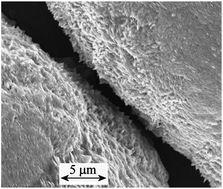Microwave-enhanced electroanalytical processes: generator–collector voltammetry at paired gold electrode junctions
Abstract
Generator–collector electrode systems allow redox processes and

* Corresponding authors
a Department of Chemistry, University of Bath, Bath, UK
b Department of Chemistry, Physical and Theoretical Chemistry Laboratory, University of Oxford, South Parks Road, Oxford, UK
Generator–collector electrode systems allow redox processes and

 Please wait while we load your content...
Something went wrong. Try again?
Please wait while we load your content...
Something went wrong. Try again?
L. Rassaei, R. W. French, R. G. Compton and F. Marken, Analyst, 2009, 134, 887 DOI: 10.1039/B900292H
To request permission to reproduce material from this article, please go to the Copyright Clearance Center request page.
If you are an author contributing to an RSC publication, you do not need to request permission provided correct acknowledgement is given.
If you are the author of this article, you do not need to request permission to reproduce figures and diagrams provided correct acknowledgement is given. If you want to reproduce the whole article in a third-party publication (excluding your thesis/dissertation for which permission is not required) please go to the Copyright Clearance Center request page.
Read more about how to correctly acknowledge RSC content.
 Fetching data from CrossRef.
Fetching data from CrossRef.
This may take some time to load.
Loading related content
